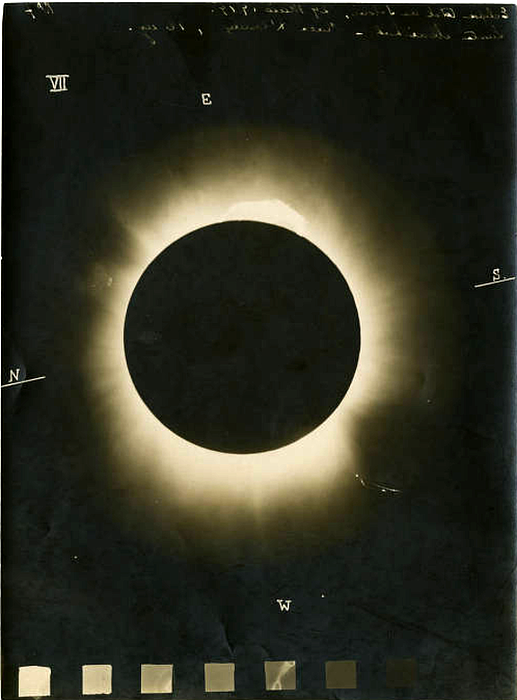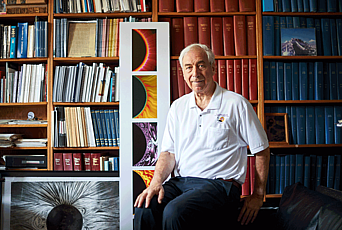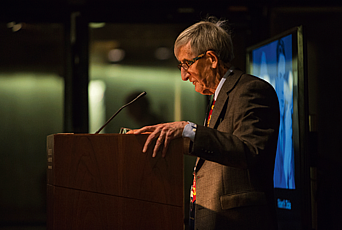Einstein’s Eclipse

The image taken of the total solar eclipse of May 29, 1919, was among Albert Einstein’s possessions when he died in 1955, then Professor Emeritus in the School of Mathematics. The image, taken by astronomer Arthur Eddington and now in the collection of the Institute’s Shelby White and Leon Levy Archives Center, provided striking evidence of Einstein’s general theory of relativity because of the way starlight was shown to curve around the mass of the Sun. Einstein was first informed of the success of the experiment in a telegram from Dutch physicist Hendrik Lorentz, whose transformation equations were used by Einstein to describe space and time and who later called the experiment’s outcome one of the “most beautiful results that science has produced.”
The year 2015 marked the centennial of Einstein’s general theory of relativity, which overturned Isaac Newton’s model of gravitation and proposed that gravity results from the warping of spacetime by massive objects. Today, theorists at the Institute continue to interpret and test Einstein’s theory, about which questions persist: Why are black holes not as simple as the theory would suggest? What is the geometry of spacetime? Why is the universe accelerating? How can general relativity be reconciled with quantum mechanics? What is the long-term fate of the universe?
When Eddington’s experiment was publicized four years after Einstein first published the theory, The Times of London called it “one of the most momentous, if not the most momentous, pronouncements of human thought.” General relativity set us on a course of understanding that we are still trying to fully grasp.


